-
Posts
617 -
Joined
-
Last visited
-
Days Won
1
Content Type
Profiles
Forums
Blogs
Gallery
Events
Store
Posts posted by P.F.
-
-
The 10th ribbon on the ribbon bar does not look like a Sudetenland ribbon to me
 ...it looks like a plain ribbon, with no stripes etc. Maybe it denotes one of his foreign awards? It would be in a suitable place if so!
...it looks like a plain ribbon, with no stripes etc. Maybe it denotes one of his foreign awards? It would be in a suitable place if so!Kind regards
Pierce
0 -
Maybe not rare but certainly uncommon i think...i know i have not seen many of these mounted!
 "For War Merit"
"For War Merit"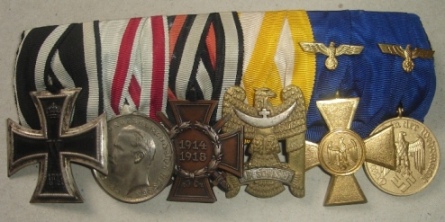
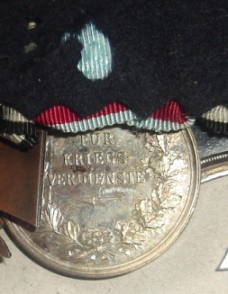 0
0 -
One of my favourite medal bars in my collection....not "rare" i hear you say?
 Look closer...the Austrian Anschluss Medal is a rare varient. It is slightly bigger than the standard Annexation medals and is also magnetic!
Look closer...the Austrian Anschluss Medal is a rare varient. It is slightly bigger than the standard Annexation medals and is also magnetic!
Pierce
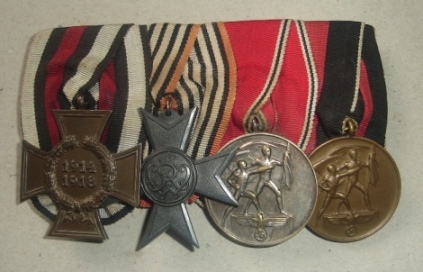
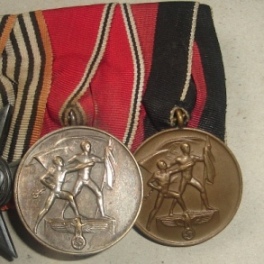 0
0 -
Hello Pierce:
Thank you for providing this excellent example! The Order ribbon with the device is for an Austrian Order of the Iron Crown award. So, here is an example of a German Officer wearing an Austrian award in the Austrian fashion.
Best regards,
"SPM"
Ah so that's what that is..Austrian Iron Crown...

Thanks SPM!

Pierce
0 -
Hello Alexandre:
While not an expert, I will share the following:
Officially, the representations of these classes of these particular awards were not worn on a field ribbon bar. However, there were always exceptions, and examples are known of some very high ranking German Officers (usually with connections to various ruling houses) wearing the ribbon of a particular Order on their field ribbon bar with a miniature representation of the higher class (neck class of the Order or sash class of the Order) on the ribbon in the style that was popular (and Officially sanctioned) with Austrian Officers. I recall in particular a field ribbon bar that I have seen which had Saxon Orders (SEHO, etc.) on it that may have been in the Seymour collection and later passed through the Thies auction. Perhaps GMIC member Deruelle will have a better recollection regarding that particular example. He IS an expert regarding the awards of Saxony and Thuringian States.
Best regards,
"SPM"
Yes for example Friedrich, Prince of Waldeck and Pyrmont...note the breast star device of the House Order on his ribbon bars!
Pierce
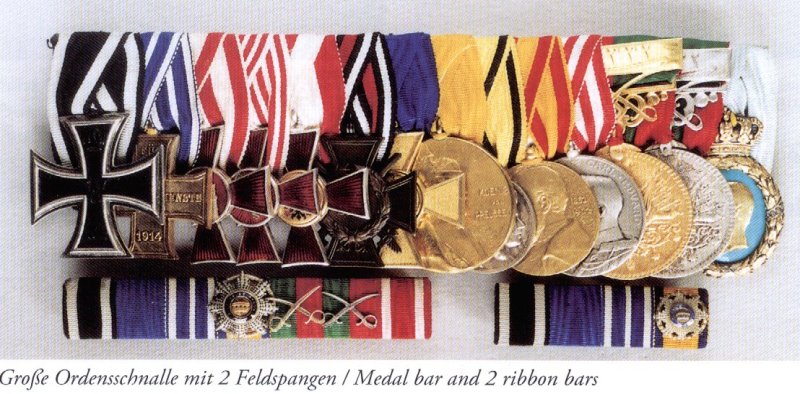 0
0 -
More great devices on this 12-place!
 Belonging to Colonel Wolfgang von Zeschau. If anyone has any information on him i would greatly appreciate it.
Belonging to Colonel Wolfgang von Zeschau. If anyone has any information on him i would greatly appreciate it.
Pierce

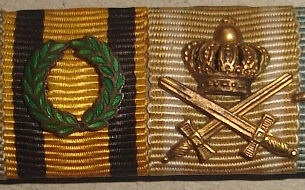 0
0 -
-
Faithful Service for 50 Years!

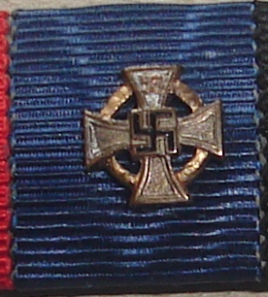 0
0 -
I haven't seen many of these West Wall ribbon devices about!

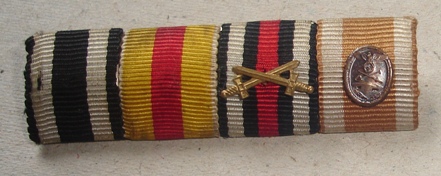
 0
0 -
Nice 3-place ribbon bar....but check out the reverse...


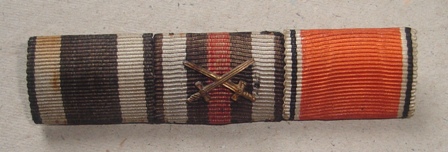
 0
0 -
Here are a few of the unusual ones in my collection.
The top 2 have the Turkish/Ottoman Red Crescent Medal ribbon.
The bottom bar must have belonged to a very "Civil/Political" guy!

Pierce
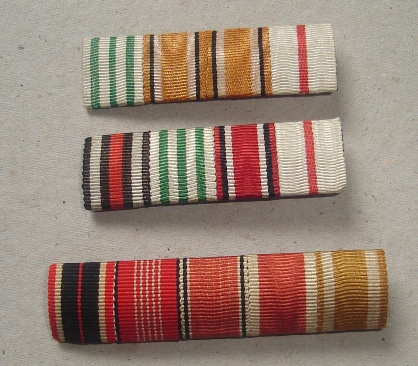 0
0 -
Thanks for the insight Heiko and for posting your red cross medal bar.
 This has answered all of my questions!
This has answered all of my questions!
Best regards
Pierce
0 -
Many thanks Heiko!
 I think the blue and red together look great....i knew it had to be something non-combatant! I am assuming from the bar above there are different classes of this award....and no way of knowing which class is which?
I think the blue and red together look great....i knew it had to be something non-combatant! I am assuming from the bar above there are different classes of this award....and no way of knowing which class is which?
Thank you
Pierce
0 -
Gentlemen,
I just got this little treasure, but i cannot determine what the first ribbon is.
 Can it be:
Can it be:-Schwarzburg-Sonderhausen Faithful Service Medal?
-Schwarzburg-Sonderhausen Fire Brigade Decoration?
-Schaumburg-Lippe Long Service Decoration?
Or perhaps i am completely wrong!

Any assistance is appreciated.

Thank you
Pierce
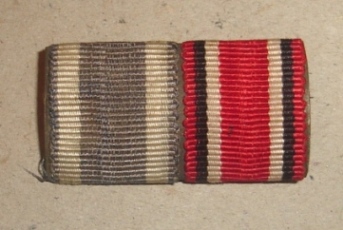
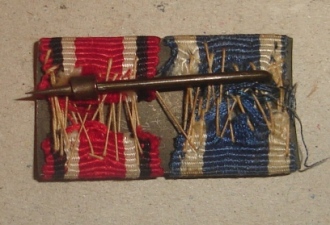 0
0 -
Also any assistance in obtaining a picture of this medal for this thread would be greatly appreciated.

My thanks
Matt
Matt,
Here is a picture of the Hamburg Life Saving Medal. A very impressive and rare ribbon bar you have aquired. Congratulations!

Kind regards
Pierce

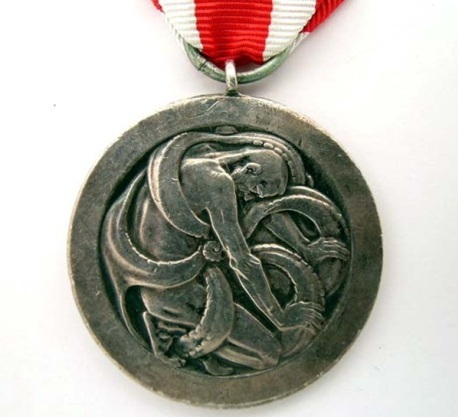 0
0 -
Not the matching medal bar Claudius but i thought i would share my only Schwarzburg item!

Kind regards
Pierce
 0
0 -
Claudio,
This is an amazing collection of items to one Officer!
 My congratulations to you!
My congratulations to you!
Best regards
Pierce
0 -
Close-up of device and shot of reverse.
Pierce
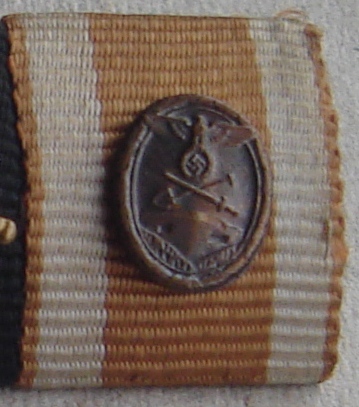
 0
0 -
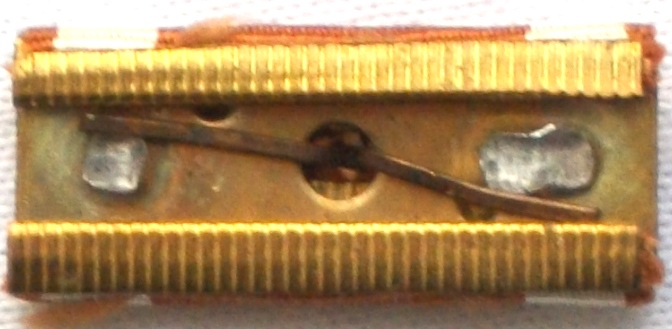
Many thanks to Dean for his extremely nice gifts (including a couple of 57 pieces). Pics are his and used with his very kind permission.

Dan

Dan,
I can't say i have seen this type of backing plate used for any Third Reich ribbon bars....it does look more like the type used for some 57er pieces, going off what i have in my own collection.
Here is my West Wall ribbon device!

Best wishes
Pierce
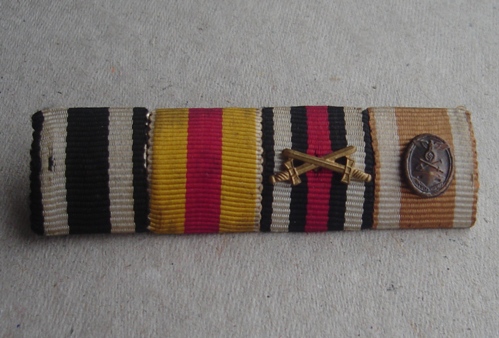 0
0 -
The backing cloth gives no clues as to whether it was worn on civilian clothes or a military/naval uniform in retirement but Sascha is correct--
the Silver AEz was generally given to long serving non-commissioned officers at 18 years into their service. (There were always exceptions-- future Grand Admiral Dönitz got one somehow while still a Midshipman) Civil servants of NCO-equivalent usually got one after about 25 years of service.
Presence of the 1897 Centenary Medal suggests a long serving Sergeant or Petty Officer or Warrant Officer, reaching the normal 18 years duty before the war.
The 1914 regulations changes extending the XXV Years Service Cross to military officials and noncommissioned ranks only came into actual use after the war since Prussia and the navy suspended bestowals for the duration.
So this fellow survived the war, got his XXV circa discharge in 1920... and by Weimar regulations, would have been "bumped out" as a Leutnant aD from either the army or navy. Anyone with 18 years of pension time (the war counted double for regulars, as did pre-war overseas service) or a year's frontline service as an Officer Deputy was so commissioned on discharge.
So he EARNED these as a non-commissioned officer but WORE them as a retired officer.
Great analysis Rick!

Nice bar Matt!
Pierce
0 -
Not too often you see both Faithful Service Decorations represented!

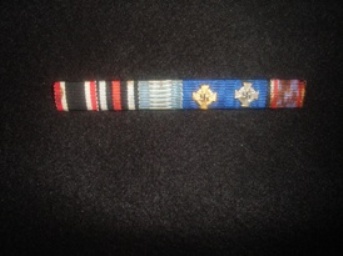
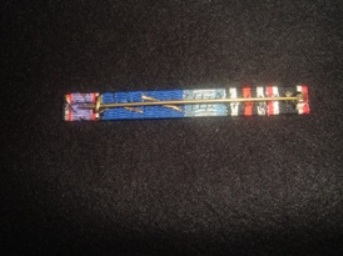 0
0 -
-
A new one to my collection. I really love this one!

 0
0 -
Olympic Games Medal.
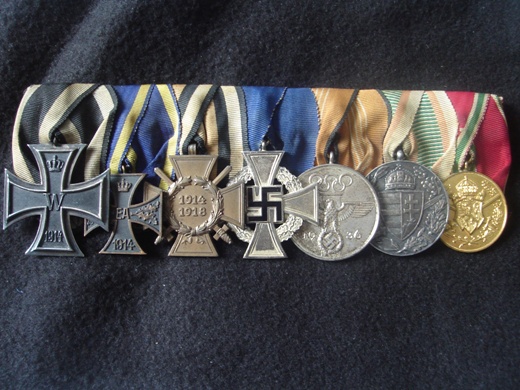 0
0





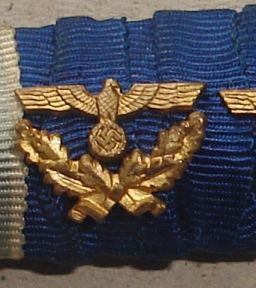
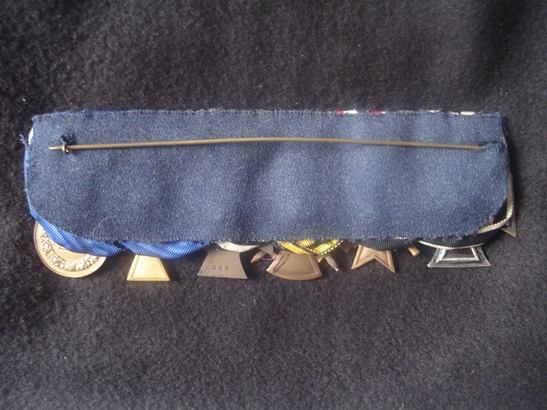
Bavarian 9-Place Ribbon Bar
in Germany: Imperial: The Orders, Decorations and Medals of The Imperial German States
Posted
Recently won this from eBay. I cannot figure out 2 things:
-What is the 5th Ribbon? (Mecklenburg?)
-Why are there 2 Long service ribbons?
Any help is much appreicated.
Kind regards
Pierce